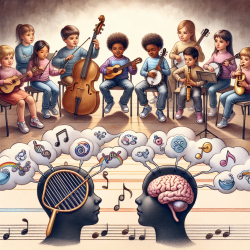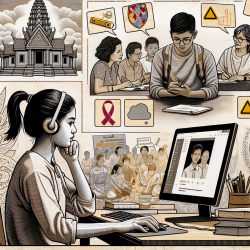Introduction
In the realm of online therapy services, especially those catering to schools, the need for efficient and effective delivery mechanisms is paramount. As practitioners, it is crucial to leverage data-driven insights to enhance service delivery. A recent study, "Energy efficiency in residential buildings amid COVID-19: A holistic comparative analysis between old and new normal occupancies," offers valuable insights that can be translated into the realm of online therapy.
Understanding the Research
The study conducted a comparative analysis of energy consumption patterns in residential buildings during the COVID-19 pandemic. It highlighted significant shifts in energy usage due to increased occupancy as more people worked and studied from home. This shift in occupancy patterns offers parallels to the increased reliance on online platforms for therapy services.
Key Findings and Their Implications
- Increased Energy Consumption: The study found a 16.4% increase in electricity use and a 7.6% decrease in natural gas use due to higher occupancy. This reflects the increased demand for resources, akin to the increased demand for online therapy services.
- Occupancy Patterns: The research underscores the importance of understanding occupancy patterns to optimize energy efficiency. Similarly, understanding client engagement patterns can help optimize online therapy sessions.
- Energy Efficiency Measures (EEMs): The study identified measures that can adapt to varying occupancy levels, highlighting the need for flexible solutions. In therapy, this translates to adaptable session structures that cater to varying client needs and engagement levels.
Applying Insights to Online Therapy
Practitioners can draw parallels from the energy efficiency study to enhance online therapy services:
- Data Monitoring: Just as energy consumption was monitored, practitioners should monitor engagement metrics to tailor therapy sessions effectively.
- Flexible Session Design: Implement flexible session designs that can adapt to the varying needs of children, similar to how EEMs adapt to different occupancy levels.
- Resource Optimization: Optimize resources, such as digital tools and platforms, to ensure efficient delivery of therapy services, akin to optimizing energy use in residential settings.
Encouraging Further Research
While the study provides a robust framework for understanding the impact of occupancy on energy efficiency, it also encourages further research into specific strategies that can be employed in online therapy. Practitioners are encouraged to explore how these insights can be tailored to enhance therapy outcomes for children.
To read the original research paper, please follow this link: Energy efficiency in residential buildings amid COVID-19: A holistic comparative analysis between old and new normal occupancies.










